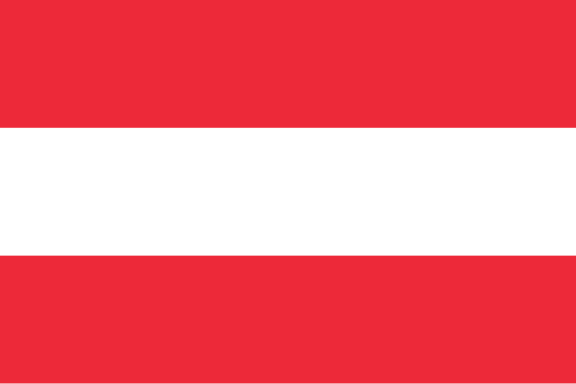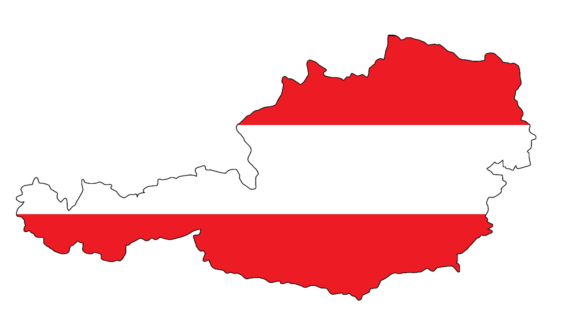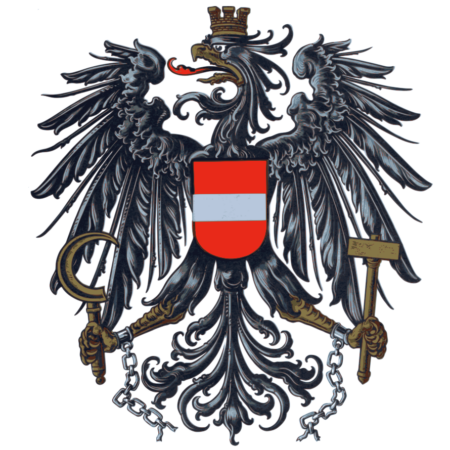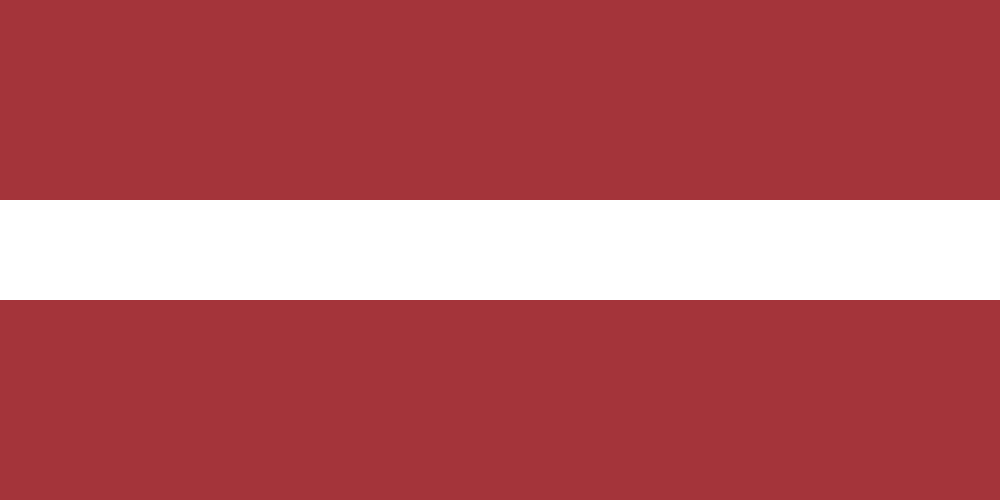The flag of Austria is a symbol of national pride. With its clean, bold lines, it captures Austria’s essence and its steadfast place among nations. This emblem, rooted in a storied past, continues to wave as a testament to Austria’s resilience and commitment to unity.
Flag of Austria

The Austrian flag boasts a minimalist yet striking design with three horizontal bands. Its layout, devoid of complex emblems or icons, has gained recognition for its elegance and has deep roots in Austria’s historical coat of arms, reflecting the country’s longstanding sovereignty and influence in European affairs.
Flag of Austria: Color Palette

Austria Flag Emoji: 🇦🇹
The color palette of the Austrian flag is succinct yet profound, comprising just two colors that hold a timeless and significant place in the nation’s visual identity.
This dichromatic scheme is a testament to the flag’s historical origins and Austria’s enduring values, setting the stage for a deeper exploration of each hue’s significance.
Meaning of Each Color

Red
The red stripes on Austria’s flag testify to the nation’s enduring legacy, with origins tracing back to the Babenberg dynasty. The red symbolizes the valor and courage that have been a hallmark of Austria’s past, particularly during pivotal moments in European history.
The legend of Duke Leopold V, whose battle attire was stained with the blood of conflict, inadvertently created the red-white-red pattern, further cementing red as a symbol of the bravery and enduring spirit of the nation.
White
The white stripe, nestled by bold red, stands for the enduring pursuit of peace and integrity within Austria. It is a color traditionally associated with transparency and harmony, reflecting Austria’s dedication to solidarity and a cohesive society.
The white band serves as a visual and symbolic respite within the flag, a reminder of the country’s commitment to these principles amidst the trials of history.
Austrian Coat of Arms

The Austrian coat of arms features a black, double-headed eagle with chains representing liberation, a hammer symbolizing industry, and a sickle for agriculture.
The mural crown signifies civic virtue, and the shield reflects the national flag’s colors, uniting Austria’s heritage and character. This emblematic eagle, free from shackles, represents Austria’s resilient spirit and independence.
The tools in its talons highlight the nation’s economic strength and its people’s hard work. The coat of arms, with its historical and contemporary symbols, encapsulates Austria’s pride and cultural depth.
Historical Evolution and the Meaning Behind Changes
The Austrian flag, with its red-white-red stripes, hails from a 12th-century battle, where the blood-soaked tunic of Duke Leopold V inspired the color choice.

Historically linked to the Babenberg and Habsburg dynasties, the flag has been a constant throughout Austria’s turbulent history. After World War I, the republic adopted a simple triband, rejecting imperial symbolism for democratic values.
Modifications appeared during the 1930s to reflect political changes but were discarded post-World War II when Austria re-established its independence. Since 1945, the unadorned triband has stood as a symbol of Austria’s stability and commitment to democracy.
Despite the flag’s enduring simplicity, its significance has evolved. The removal of the Habsburg eagle after World War I marked Austria’s transition from monarchy to republic.
Later, the brief addition and subsequent removal of the eagle during the Austrofascist period mirrored the nation’s tumultuous political landscape.
Today, the stark triband is a declaration of Austria’s sovereignty and enduring legacy, a visual testament to its capacity for renewal and stability amidst the currents of history.
Overall Symbolic Meaning of the Flag

The Austrian flag stands as a symbol of the country’s unity, resilience, and identity, encapsulating a historical journey and a commitment to a peaceful and cohesive future.
It distills the essence of the nation’s heritage into a simple yet profound emblem of continuity. Serving as a reminder of the collective strength and democratic values, the flag is a visual affirmation of Austria’s place in the heart of Europe.
Similar Flags to the Flag of Austria
The flag of Austria, with its distinctive red-white-red horizontal triband, shares similarities with a few other national flags, primarily due to historical connections or design influences. Here are some examples:
Latvia

The Latvian flag also features horizontal bands and uses a similar color scheme of red and white.
However, the Latvian red is a darker shade, sometimes called “Latvian red,” and the white stripe is narrower than the red ones. The resemblance is coincidental rather than due to a shared history.
Peru

The flag of Peru can be seen as similar when it is displayed without its central coat of arms. It consists of three vertical stripes with red on the sides and white in the middle.
The color scheme is a match, although the orientation of the stripes and the presence of the coat of arms in official use distinguish it from Austria’s flag.
Lebanon

While the overall design is different, Lebanon’s flag features a prominent white band flanked by two red bands, similar to Austria’s. The central white bar displays a green cedar tree.
The red and white colors are said to symbolize peace and purity, respectively, which is a common symbolism shared with Austria’s flag.
Conclusion
Austria’s flag weaves a tale of resilience and unity, embodying the nation’s enduring identity and values. It is a cherished emblem for Austrians and a distinctive marker in international flags, symbolizing a steadfast commitment to democracy and consensus.
Image Sources and Copyright Information
- Austrian Flags in Front of Parliament Building: © ElenaZet/Shutterstock
- Austrian Flag Pin on Map: © hyotographics/Shutterstock